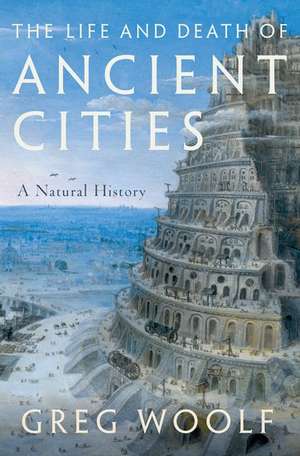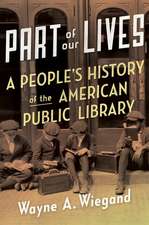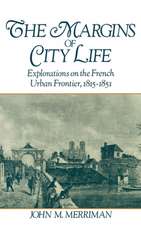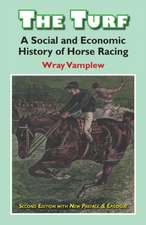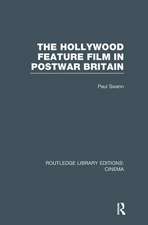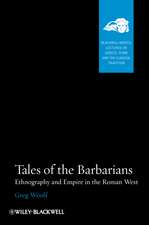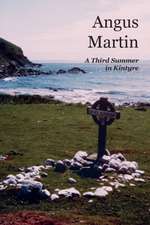The Life and Death of Ancient Cities
Autor Greg Woolfen Limba Engleză Paperback – 26 aug 2022
>Based on the most recent historical and archaeological evidence, The Life and Death of Ancient Cities provides a sweeping narrative of one of the world's first great urban experiments, from Bronze Age origins to the demise of cities in late antiquity. Greg Woolf chronicles the history of the ancient Mediterranean city, against the background of wider patterns of human evolution, and of the unforgiving environment in which they were built. Richly illustrated, the book vividly brings to life the abandoned remains of our ancient urban ancestors and serves as a stark reminder of the fragility of even the mightiest of cities.
| Toate formatele și edițiile | Preț | Express |
|---|---|---|
| Paperback (2) | 120.39 lei 10-16 zile | +44.11 lei 4-10 zile |
| OUP OXFORD – 25 aug 2022 | 120.39 lei 10-16 zile | +44.11 lei 4-10 zile |
| HURST & CO – 26 aug 2022 | 179.11 lei 3-5 săpt. | |
| Hardback (2) | 180.99 lei 10-16 zile | +67.88 lei 4-10 zile |
| OUP OXFORD – 16 iul 2020 | 180.99 lei 10-16 zile | +67.88 lei 4-10 zile |
| HURST & CO – iul 2020 | 246.32 lei 3-5 săpt. |
Preț: 179.11 lei
Nou
Puncte Express: 269
Preț estimativ în valută:
34.28€ • 35.33$ • 28.94£
34.28€ • 35.33$ • 28.94£
Carte disponibilă
Livrare economică 10-24 februarie
Preluare comenzi: 021 569.72.76
Specificații
ISBN-13: 9780197621837
ISBN-10: 019762183X
Pagini: 528
Dimensiuni: 154 x 233 x 38 mm
Greutate: 0.78 kg
Editura: HURST & CO
ISBN-10: 019762183X
Pagini: 528
Dimensiuni: 154 x 233 x 38 mm
Greutate: 0.78 kg
Editura: HURST & CO
Descriere
Descriere de la o altă ediție sau format:
The human race is on a 10,000 year urban adventure. Our ancestors wandered the planet or lived scattered in villages, yet by the end of this century almost all of us will live in cities. But that journey has not been a smooth one and urban civilizations have risen and fallen many times in history. The ruins of many of them still enchant us.This book tells the story of the rise and fall of ancient cities from the end of the Bronze Age to the beginning of the Middle Ages. It is a tale of war and politics, pestilence and famine, triumph and tragedy, by turns both fabulous and squalid. Its focus is on the ancient Mediterranean: Greeks and Romans at the centre, but Phoenicians and Etruscans, Persians, Gauls, and Egyptians all play a part. The story begins with the Greek discovery of much more ancient urban civilizations in Egypt and the Near East, and charts the gradual spread of urbanism to the Atlantic and then the North Sea in the centuries that followed.The ancient Mediterranean, where our story begins, was a harsh environment for urbanism. So how were cities first created, and then sustained for so long, in these apparently unpromising surroundings? How did they feed themselves, where did they find water and building materials, and what did they do with their waste and their dead? Why, in the end, did their rulers give up on them? And what it was like to inhabit urban worlds so unlike our own - cities plunged into darkness every night, cities dominated by the temples of the gods, cities of farmers, cities of slaves, cities of soldiers.Ultimately, the chief characters in the story are the cities themselves. Athens and Sparta, Persepolis and Carthage, Rome and Alexandria: cities that formed great families. Their story encompasses the history of the generations of people who built and inhabited them, whose short lives left behind monuments that have inspired city builders ever since - and whose ruins stand as stark reminders to the 21st century of the perils as well as the potential rewards of an urban existence.
The human race is on a 10,000 year urban adventure. Our ancestors wandered the planet or lived scattered in villages, yet by the end of this century almost all of us will live in cities. But that journey has not been a smooth one and urban civilizations have risen and fallen many times in history. The ruins of many of them still enchant us.This book tells the story of the rise and fall of ancient cities from the end of the Bronze Age to the beginning of the Middle Ages. It is a tale of war and politics, pestilence and famine, triumph and tragedy, by turns both fabulous and squalid. Its focus is on the ancient Mediterranean: Greeks and Romans at the centre, but Phoenicians and Etruscans, Persians, Gauls, and Egyptians all play a part. The story begins with the Greek discovery of much more ancient urban civilizations in Egypt and the Near East, and charts the gradual spread of urbanism to the Atlantic and then the North Sea in the centuries that followed.The ancient Mediterranean, where our story begins, was a harsh environment for urbanism. So how were cities first created, and then sustained for so long, in these apparently unpromising surroundings? How did they feed themselves, where did they find water and building materials, and what did they do with their waste and their dead? Why, in the end, did their rulers give up on them? And what it was like to inhabit urban worlds so unlike our own - cities plunged into darkness every night, cities dominated by the temples of the gods, cities of farmers, cities of slaves, cities of soldiers.Ultimately, the chief characters in the story are the cities themselves. Athens and Sparta, Persepolis and Carthage, Rome and Alexandria: cities that formed great families. Their story encompasses the history of the generations of people who built and inhabited them, whose short lives left behind monuments that have inspired city builders ever since - and whose ruins stand as stark reminders to the 21st century of the perils as well as the potential rewards of an urban existence.
Recenzii
Selected as a 2020 Book of the Year in The Times Literary Supplement
A magisterial survey of ancient cities... "The Life and Death of Ancient Cities" is a big history that leaves aside some of those big comparative questions, preferring to draw out the contingent and the particular in its vivid portraits. Mr. Woolf makes for an authoritative, readable and thought-provoking guide through a few thousand years of our life as urban animals.
Fascinating and challenging... an impressive sweep of a book.
Greg Woolf reminds us of how vulnerable urban life has often been to plague, invasion and economic collapse.
As I hope will be obvious, this is ever such a good book. Woolf has an enviable knack for getting across complex ideas in a deft and stylish way, without any sacrifice of precision... Whatever one thinks of the evolutionary underpinning of life and death, no one has ever made a more compelling case for seeing cities as part of the natural history of our species.
A general history that manages to escape both the superficiality and the cretinous populism to which the genre is prone... From hydraulic despotism as the driver of urbanism to civilisation-ending vulcanism at Santorini, Woolf dismembers a lot of sacred cows. And, in a surely conscious paradox, he ventures a master hypothesis of his own: an evolutionary approach to urbanism. We are, Woolf contends, urban apes.
An impressive overview of trends in urban histories and will have an impact outside the field of archaeology and ancient history, underlining the centrality of these disciplines to the humanities and social sciences in general, as well as to a wider audience. It is certainly worth the long read to let oneself be carried through urban moments from the Levantine and Mediterranean prehistory into Late Antiquity and beyond. It is a hugely enjoyable read that reminds us that cities and settlements are creations of, and tools for, humans, creating possibilities and unforeseen hindrances in our lives.
This is a fine single-volume study of the ebb and flow of the European civilisations that built cities both large and small.
If you have any interest in its subject, you won't regret the investment of time and money.
Greg Woolf is a lively and learned guide to ancient cities... Woolf's book contains many brilliant insights and is a major contribution to the history of the Mediterranean.
A deeply researched and ambitious "natural history" of the origins and growth of urbanism.
An engaging and comprehensive read... Woolf provides an interesting discussion on how humans are suited to city life, and also offers some thought-provoking considerations on the current rate of globalisation that we're experiencing today This book should appeal to those who want to discover another perspective on the history of the Mediterranean or, indeed, the ancient world.
Woolf's The Life and Death of Ancient Cities: A Natural History is an engaging and richly detailed account that effectively tears down misconceptions about the ancient city and replaces them with a more diverse, more believable, and, ultimately, more interesting tale of kaleidoscopic urban experimentation across the ancient Mediterranean world.
This worthy book contains multitudes, and as interesting and certainly as instructive as Professor Woolf's studies of urbanization are the not-few cases of deurbanization that he is able to explore, most conspicuously the (possible causes of the) decline or rather transformation of the late Roman antique world.
This is a first-class publication that threads its way seamlessly through a complex topic across vast regions and time-spans. It is also accessibly written and highly recommended.
This is an important study which should stand alongside the tours de force of Fernand Braudel and David Abulafia.
The Life and Death of Ancient Cities joins a shelf full of enlightening new fun reads on understanding our beginnings in the ancient world.
The enormous scope of this book is impressive, and with his resolute 'focus' on ecological circumstances Woolf shifts the focus to make us reconsider the role of urbanism in Antiquity.
A magisterial survey of ancient cities... "The Life and Death of Ancient Cities" is a big history that leaves aside some of those big comparative questions, preferring to draw out the contingent and the particular in its vivid portraits. Mr. Woolf makes for an authoritative, readable and thought-provoking guide through a few thousand years of our life as urban animals.
Fascinating and challenging... an impressive sweep of a book.
Greg Woolf reminds us of how vulnerable urban life has often been to plague, invasion and economic collapse.
As I hope will be obvious, this is ever such a good book. Woolf has an enviable knack for getting across complex ideas in a deft and stylish way, without any sacrifice of precision... Whatever one thinks of the evolutionary underpinning of life and death, no one has ever made a more compelling case for seeing cities as part of the natural history of our species.
A general history that manages to escape both the superficiality and the cretinous populism to which the genre is prone... From hydraulic despotism as the driver of urbanism to civilisation-ending vulcanism at Santorini, Woolf dismembers a lot of sacred cows. And, in a surely conscious paradox, he ventures a master hypothesis of his own: an evolutionary approach to urbanism. We are, Woolf contends, urban apes.
An impressive overview of trends in urban histories and will have an impact outside the field of archaeology and ancient history, underlining the centrality of these disciplines to the humanities and social sciences in general, as well as to a wider audience. It is certainly worth the long read to let oneself be carried through urban moments from the Levantine and Mediterranean prehistory into Late Antiquity and beyond. It is a hugely enjoyable read that reminds us that cities and settlements are creations of, and tools for, humans, creating possibilities and unforeseen hindrances in our lives.
This is a fine single-volume study of the ebb and flow of the European civilisations that built cities both large and small.
If you have any interest in its subject, you won't regret the investment of time and money.
Greg Woolf is a lively and learned guide to ancient cities... Woolf's book contains many brilliant insights and is a major contribution to the history of the Mediterranean.
A deeply researched and ambitious "natural history" of the origins and growth of urbanism.
An engaging and comprehensive read... Woolf provides an interesting discussion on how humans are suited to city life, and also offers some thought-provoking considerations on the current rate of globalisation that we're experiencing today This book should appeal to those who want to discover another perspective on the history of the Mediterranean or, indeed, the ancient world.
Woolf's The Life and Death of Ancient Cities: A Natural History is an engaging and richly detailed account that effectively tears down misconceptions about the ancient city and replaces them with a more diverse, more believable, and, ultimately, more interesting tale of kaleidoscopic urban experimentation across the ancient Mediterranean world.
This worthy book contains multitudes, and as interesting and certainly as instructive as Professor Woolf's studies of urbanization are the not-few cases of deurbanization that he is able to explore, most conspicuously the (possible causes of the) decline or rather transformation of the late Roman antique world.
This is a first-class publication that threads its way seamlessly through a complex topic across vast regions and time-spans. It is also accessibly written and highly recommended.
This is an important study which should stand alongside the tours de force of Fernand Braudel and David Abulafia.
The Life and Death of Ancient Cities joins a shelf full of enlightening new fun reads on understanding our beginnings in the ancient world.
The enormous scope of this book is impressive, and with his resolute 'focus' on ecological circumstances Woolf shifts the focus to make us reconsider the role of urbanism in Antiquity.
Notă biografică
Greg Woolf has been Professor of Classics and Director of the Institute of Classical Studies since January 2015 before which he was Professor of Ancient History at the University of St Andrews (since 1998) and held fellowships at various Cambridge and Oxford Colleges. He has degrees from both Oxford and Cambridge, is a Fellow of the British Academy, of the Society of Antiquaries of Scotland, of the Society of Antiquaries of London and of the Max Weber College, Erfurt and he is a member of the Academia Europaea. He has held visiting appointments in Brasil, France, Germany, Italy and Spain and lectured around the world. He has published on Roman imperialism, on ancient literacy, on libraries, encyclopaedias and ancient ethnography and more recently on religious history and the archaeology of the Roman world.
